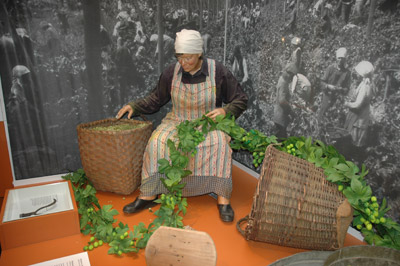Spotted on a wall in the brewhouse at St. Louis Brewery’s Bottleworks: “Uncle Tupelo rates the beers.”
Obviously dated since Uncle Tupelo – born just a few miles away, and across the Mississippi River, in Belleville, Ill. – broke up in 1994. But still fun, and it didn’t hurt that The Band was belting out “The Night They Drove Old Dixie Down” on the brewhouse stereo while I scribbled some notes.
Budweiser – Statement on how f–ked up the world is. Should not be the most popular beer in the world. Just proves that sexism in advertising gets you anywhere.
Miller – Good, but we shouldn’t admit drinking it – look what happened to the Long Ryders and The Del Fuegos.
Black Label – Rare delicacy, hard to find.
Michelob Dry – Wet, good for breakfast.
Heineken – All the best things in life smell bad.
Bass Ale – Good fish. Good beer.
Red, White & Blue – Role model, cheap date, highest recommendation.
Old Milwaukee – Only beer that hangs out in the refrigerator for longer than a week, last resort.
Pabst – Old man beer, check back in 30 years.
Schlitz – Functional beer.
Old Style – Probably why all the bands in Chicago suck (just kidding).
Strohs – Forgettable.
Corona – Too many requirements. Evil stigma.
Fosters – Love it on payday, love those sulfites.
Olympia – Grunts, groans, flashbacks, etc. Never referred to by full name.
Coors – Mussolini’s choice. Heavy metal beer.
Stag – Hometown beer, goes good with adolescence, rest in peace.
EKU 28 – Most potent beer in the world, good ice cream topping.
Maybe the group should reunite just to put together an updated list.

 – Check out a few museums in Bavaria, where it seems every other town has some sort of beer library. They all have room after room of artifacts, but the best bring those to life.
– Check out a few museums in Bavaria, where it seems every other town has some sort of beer library. They all have room after room of artifacts, but the best bring those to life.